Vertebral column, ribs and muscles
1/138
There's no tags or description
Looks like no tags are added yet.
Name | Mastery | Learn | Test | Matching | Spaced |
|---|
No study sessions yet.
139 Terms
What is flexion?
Bending forwards or backwards
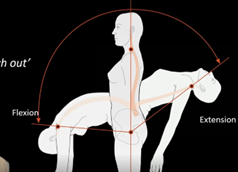
What is extension?
Stretching the body
What is the purpose of the vertebral body?
To support load conveyed through vertebral column.
How does the size of vertebral bodies change?
As we go down column, body sizes increase to support the increased weight of the body
What is the pedicle?
Small posterior projection connecting transverse process and vertebral body
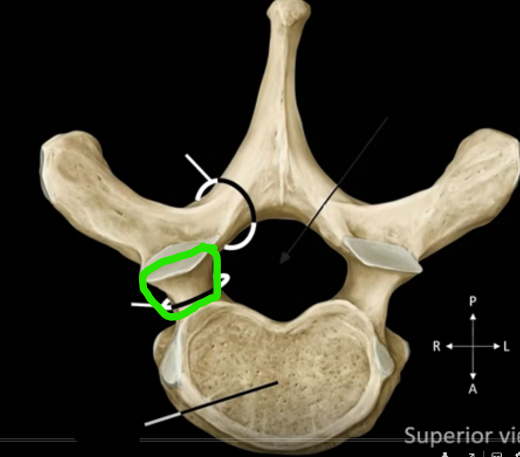
What is this?
The pedicle connecting transverse process and body
What is the lamina?
Connecting transverse process and spinous process - is very flat (hence lamina like laminator)
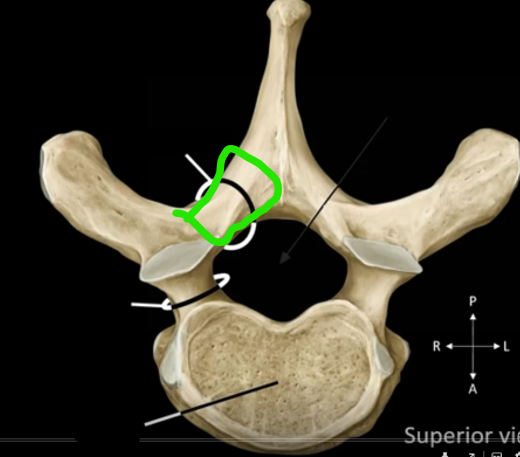
What is this?
Lamina connecting transverse and spinous process
What is the spinous process?
Long horn at top.
We can palpate at spine
Enables muscles and ligaments to attach at this point
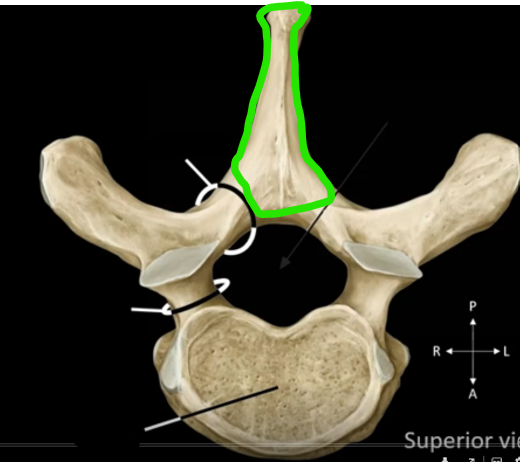
What is this?
Spinous process - can join to muscles and ligaments
What are the transverse processes?
Lateral projections on either side of body
Can join to muscles and ligaments
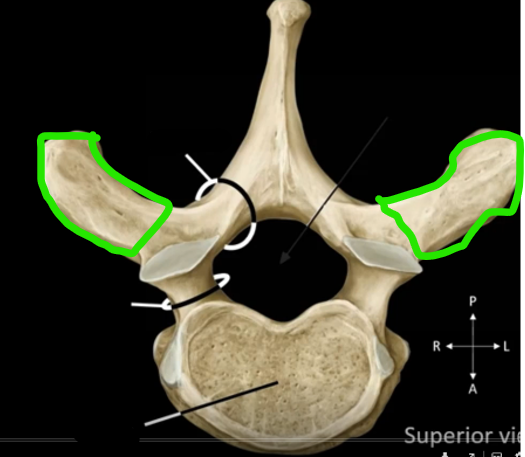
What is this?
Transverse processes - site for muscles and ligaments to attach
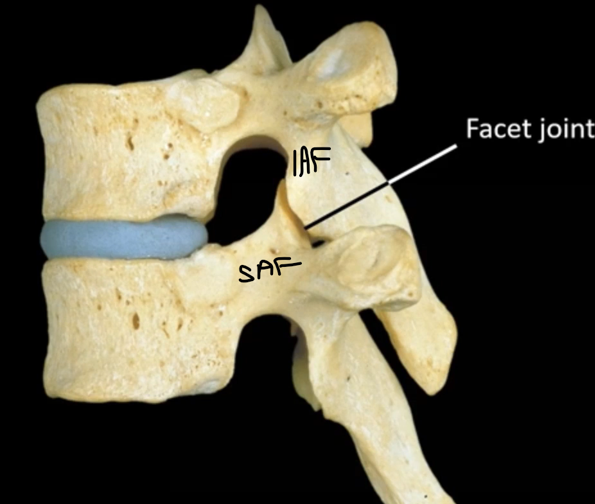
How are synovial joints formed?
Formed between inferior articulate facet of the top vertebra and the superior articular facet of the bottom vertebra.
Fluid filled joint allows high movement.
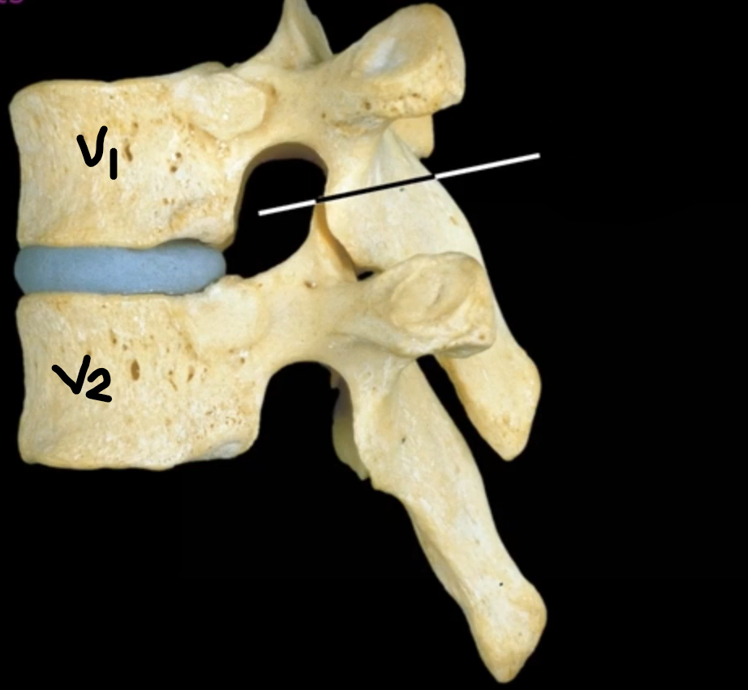
What is this?
Intervertebral foramen
What is the point of the intervertebral foramen?
Spinal nerves pass through here.
What is the intervertebral disc?
Remanent of notochord
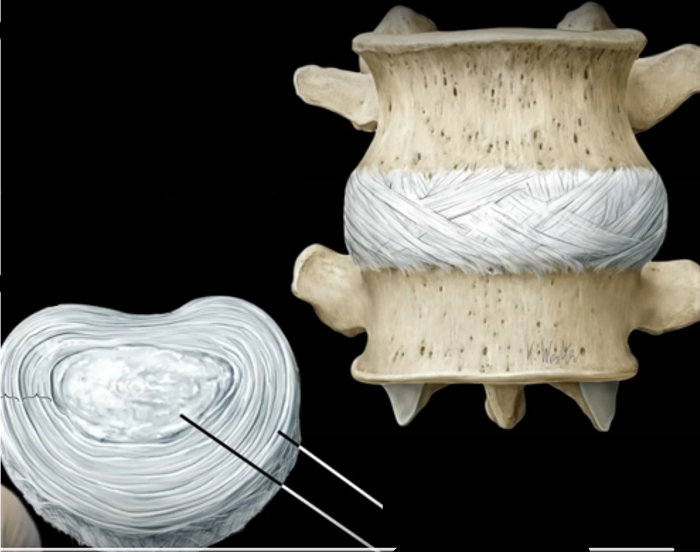
What are these two rings?
Inner ring = nucleus pulposus
Outer ring = Annulus fibrosis
Where does the vertebral column originate from?
Somites from the sclerotome
What is the vertebral column divided into?
7 (cervical), 12 (thoracic), 5 (thoracic), 5 (lumbar), 3-5 (coccygeal)
7AM———--12PM————5PM———5, 3-5
What are the curves of the vertebral column?
Lordosis and Kyphosis

Identify each cruve
Lordosis — Kyphosis — Lordosis — Kyphosis
What are the typical features of a cervical vertebra?
bifid spinous process
transverse foramina
small vertebral body
large triangular vertebral foramen
Synovial joint - obliquely transverse foramen
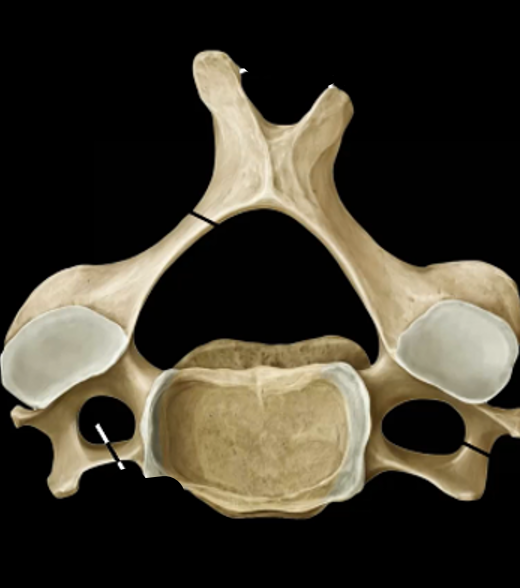
What is this?
Cervical vertebra
What runs through the transverse foramina?
Vertebral artery supplying brain for motor function
Why is C7 weird regarding transverse foramen?
C7 has transverse foramen but nothing runs through it
Who are the atypical members of the cervical vertebra?
C1, C2 and C7
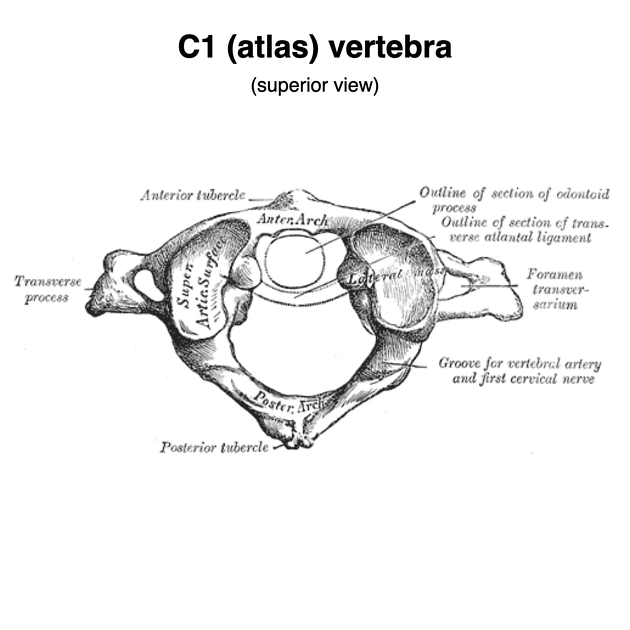
Why is C1 atypical?
No vertebral body and spinous process. Has a posterior tubercule and anterior tubercule instead
Called Atlas since it holds up our head
What is the Atlanto-Occipital Joint?
Joins occipital bone and C1. Only moves in one direction which is nodding
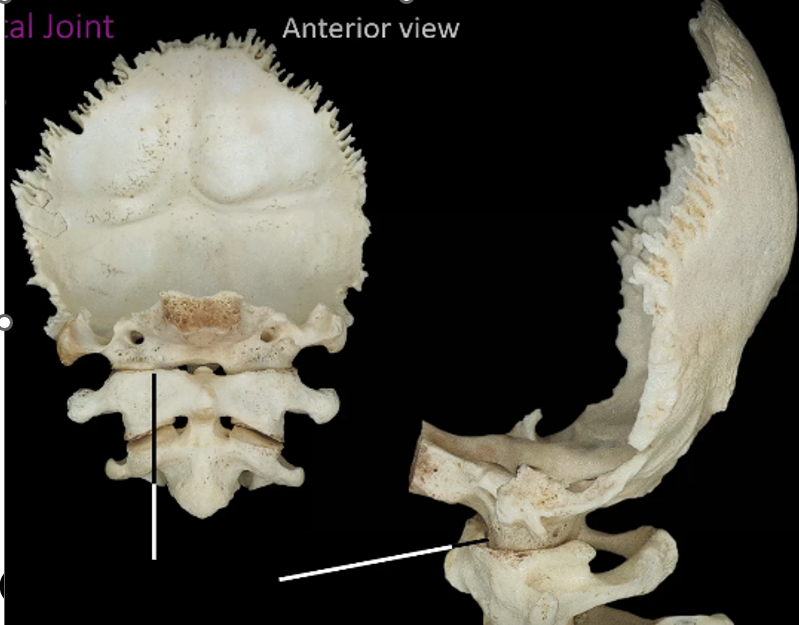
What is this?
Atlanto-Occipital joint
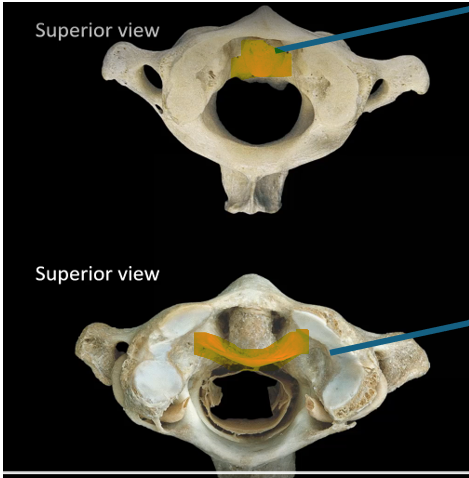
What is this?
Top is Dens
Below is tender arch around the dens
How many thoracic vertebrae are there?
12
What angle is the cervical vertebrae orientated?
Facet joints are obliquely transverse
What angle is the thoracic vertebrae orientated?
Facet joins lie in the coronal plane
What motion can the thoracic vertebrae undergo?
Rotation, not flexion and extension
What are the typical features of a thoracic vertebrae?
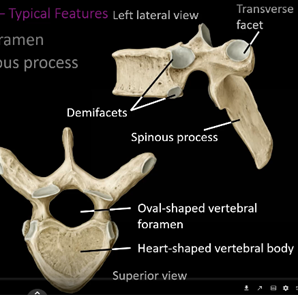
Elongated spinous process, transverse facets, demifacets, small bodies, heart shaped bodies, small, circular vertebral foramen
What plane are facet joints in?
Sagittal plane
What movement does lumbar region facilitate?
Flexion but restricts rotation
What is the atypical member of lumbar segment and why?
L5 because it connects to sagrum
What do mamillary process attach to at the lumbar region?
Intrinsic back muscles
What are the typical features of a lumbar vertebrae?
Mamillary process, large, kidney bean-shaped bodies, small triangular vertebral foramen, square spinous process
What is this?
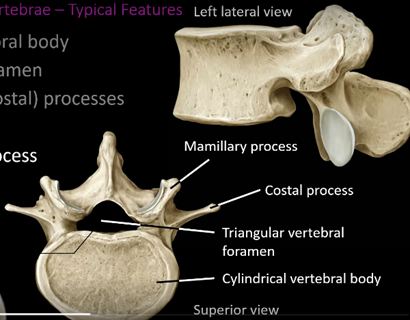
Lumbar vertebrae
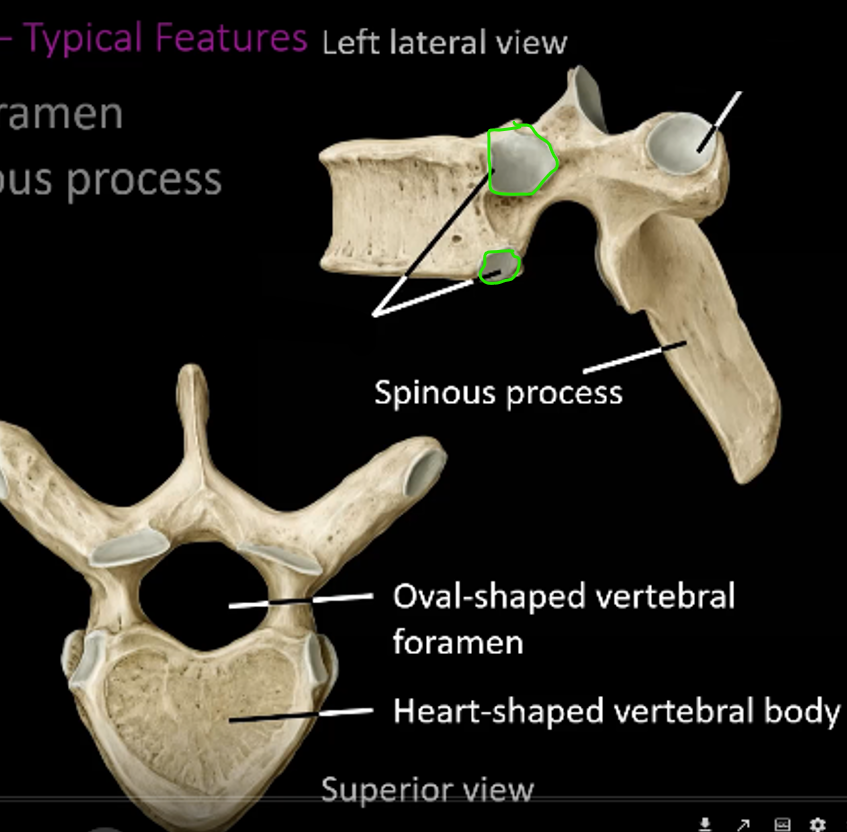
What is this?
Demifacets
What do demifacets attach to?
Articulate to ribs
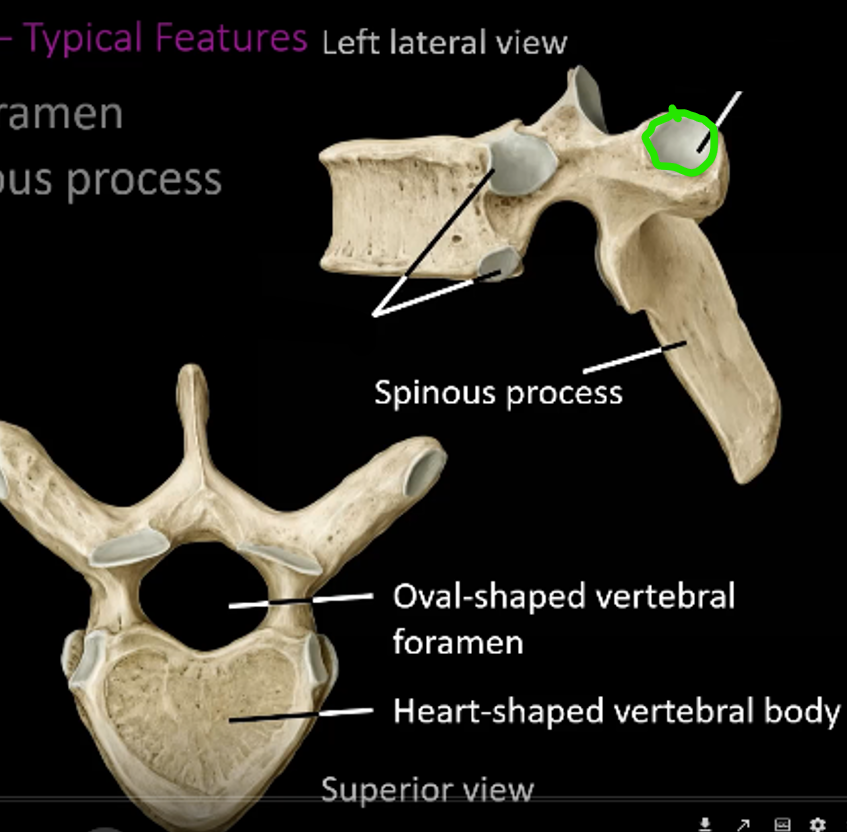
What is this?
Transverse facet
What does transverse facet attach to?
Tubercules of the ribs
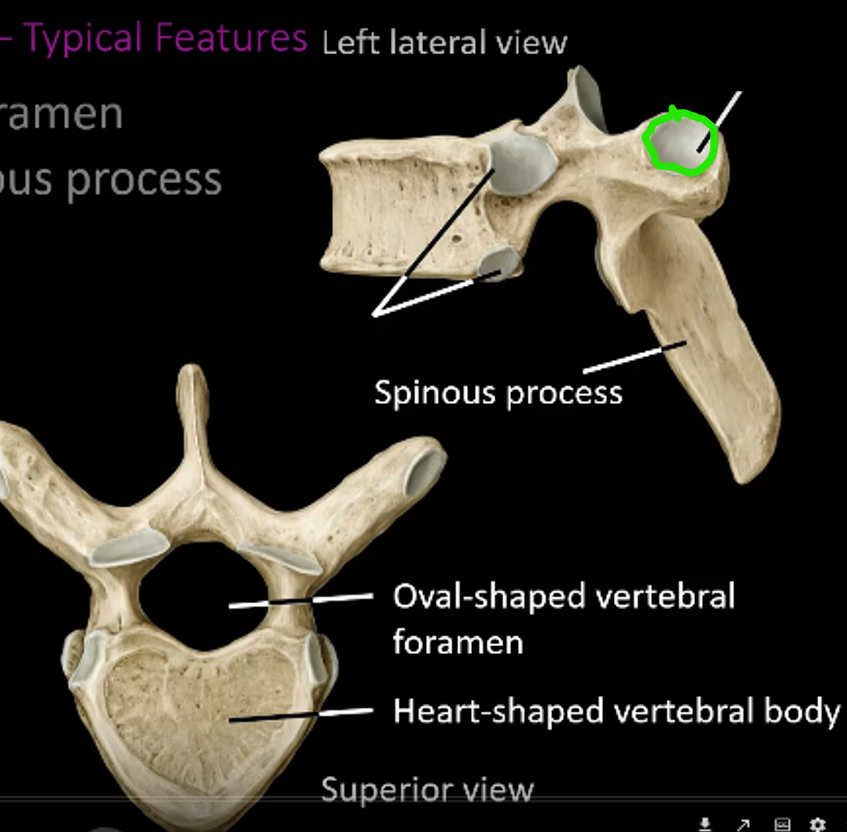
What is this?
Transverse facet
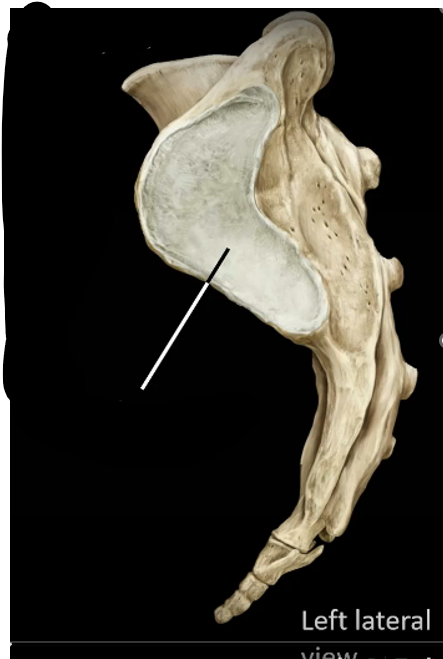
What is this?
Auricular surface of the sacrum between pelvis and sacrum

What is this?
Promontory which articulates with L5
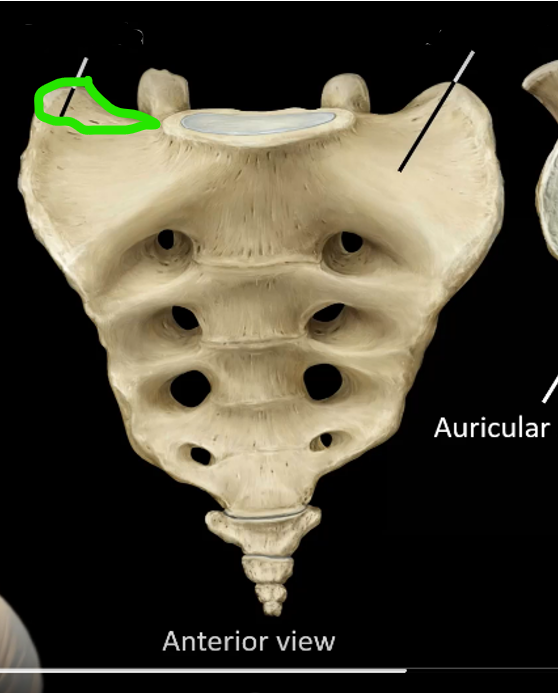
What is this?
Sacral ala (wing) which articulates with pelvis
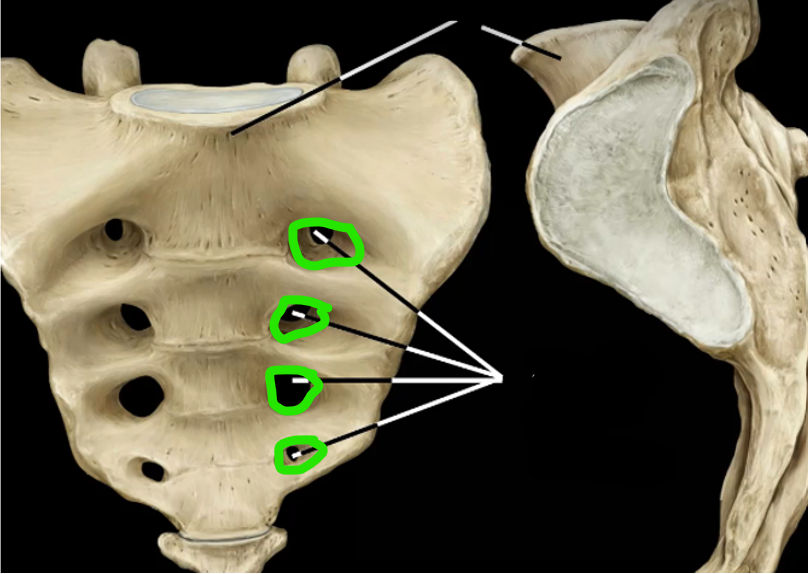
What is this?
Sacral foramina
Anterior = anterior sacral foramina containing ventral rami
Posterior = posterior sacral foramina containing dorsal rami
What is the sacral canal?
A whole running vertically through the sacrum which is the most caudal part of the vertebral column containing spinal cord and nerves
What does the sacrum have instead of spinous processes?
Median sacral crest
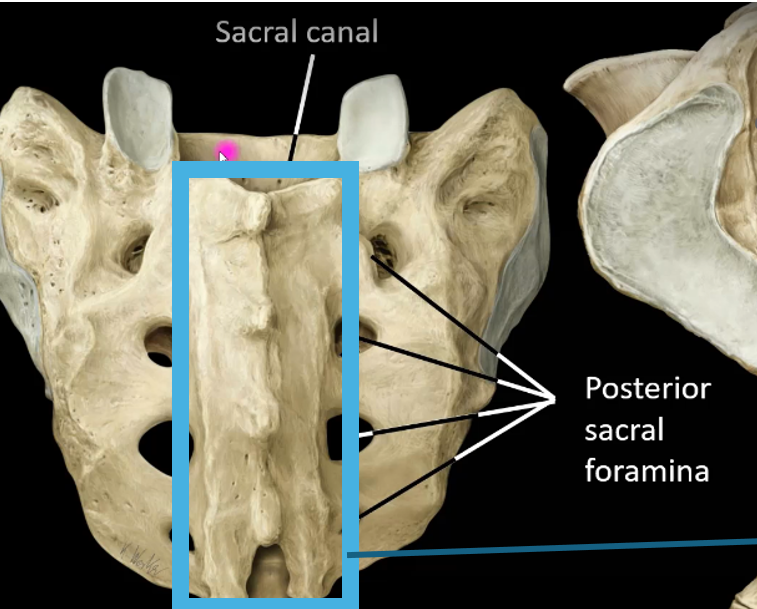
What is this?
Median sacral crest
What is this?
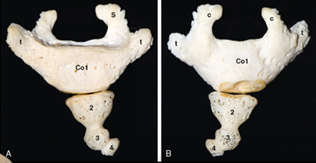
Coccyx
Where is the sternum located?
In the center anterior to the ribs.
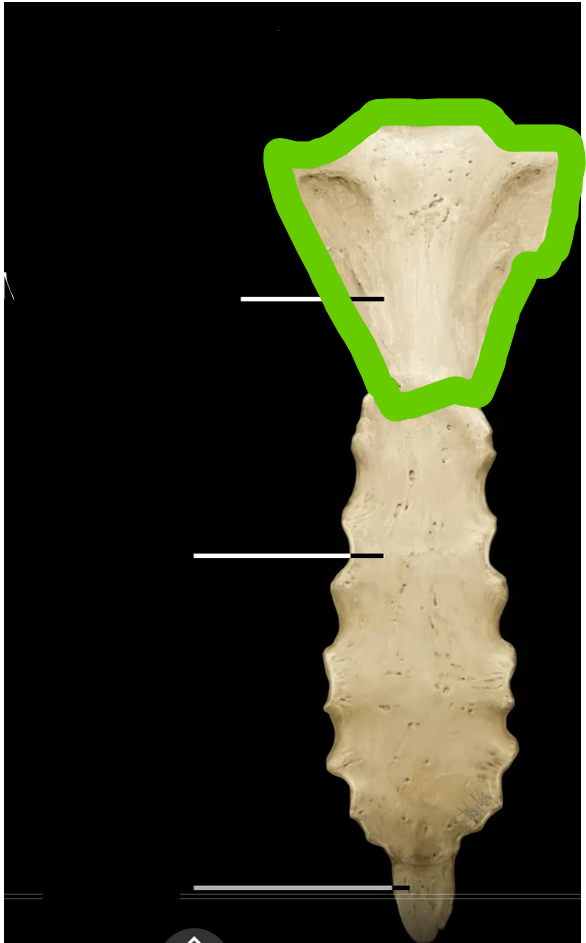
What is this?
Manubrium
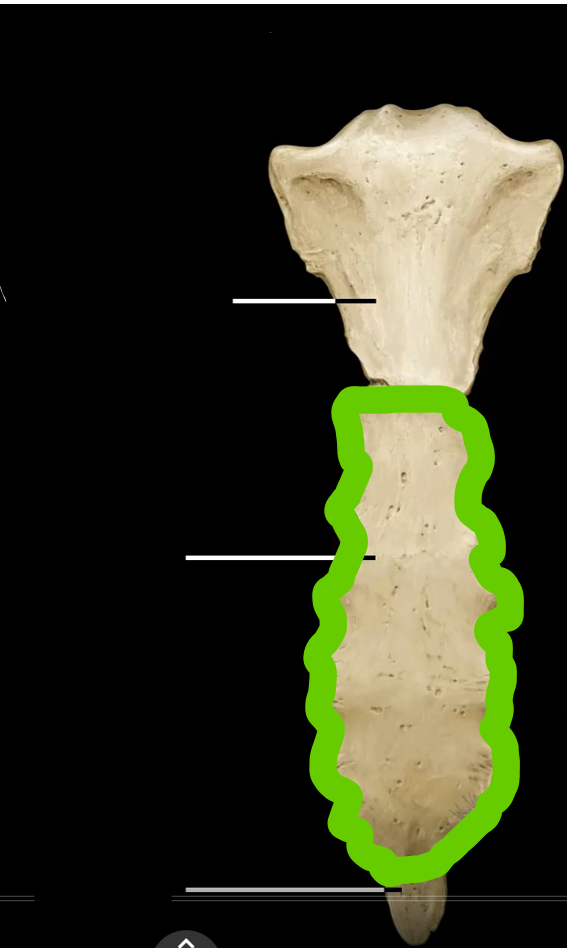
What is this?
Body of sternum
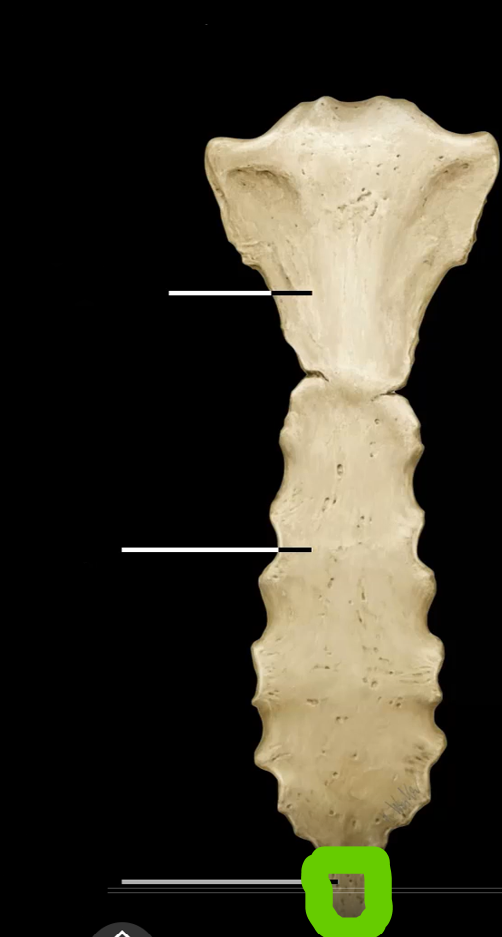
What is this?
Xiphoid process
Where is the sternal angle?
Between manubrium and body
What is the clavicular notch?
Point at which clavicles join at the manubrium.
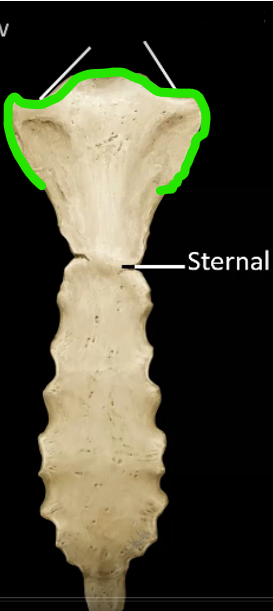
What is this?
Clavicular notch
How many costal facets are on the sternum?
7 costal facets
How many rib pairs are there?
12
What are all the categories we can place ribs in?
True
False
Floating
Typical
Atypical
Which ribs are true?
1-7
Which ribs are false?
8-10
Which ribs are floating?
11-12
What is the costochondral region?
The joint between the ribs and a cartilaginous interval.
What is the sternocostal region?
Joint between the cartilaginous interval and the sternum
Why are ribs classified as true ribs?
-Cartilage of ribs directly attaches to sternum.
-1-to-1 relationship between the amounts joints on sternum and ribs
Why are ribs classified as false ribs?
Ribs indirectly join sternum since their cartilages join to the 7th rib, not directly to the sternum.
What are interchordal joints?
Joints between the cartilages and the 7th rib’s cartilages?
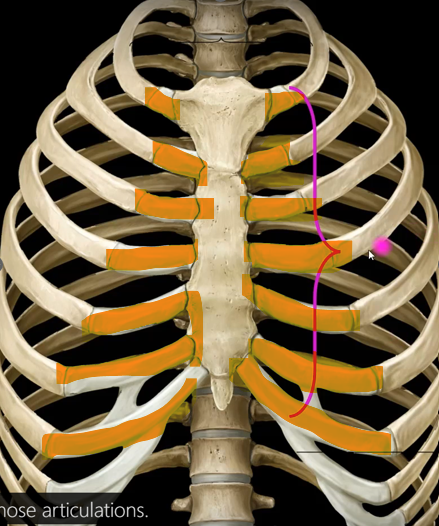
What are these ribs?
True ribs
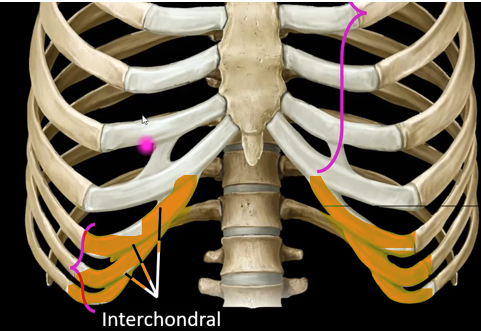
What are these ribs?
False ribs
What are floating ribs?
Ribs 11 and 12 that don’t have any connection to the sternum
What are typical features ribs?
-Has a head
-2 articular facets
-Neck
-Costal tubercule
-Costal groove
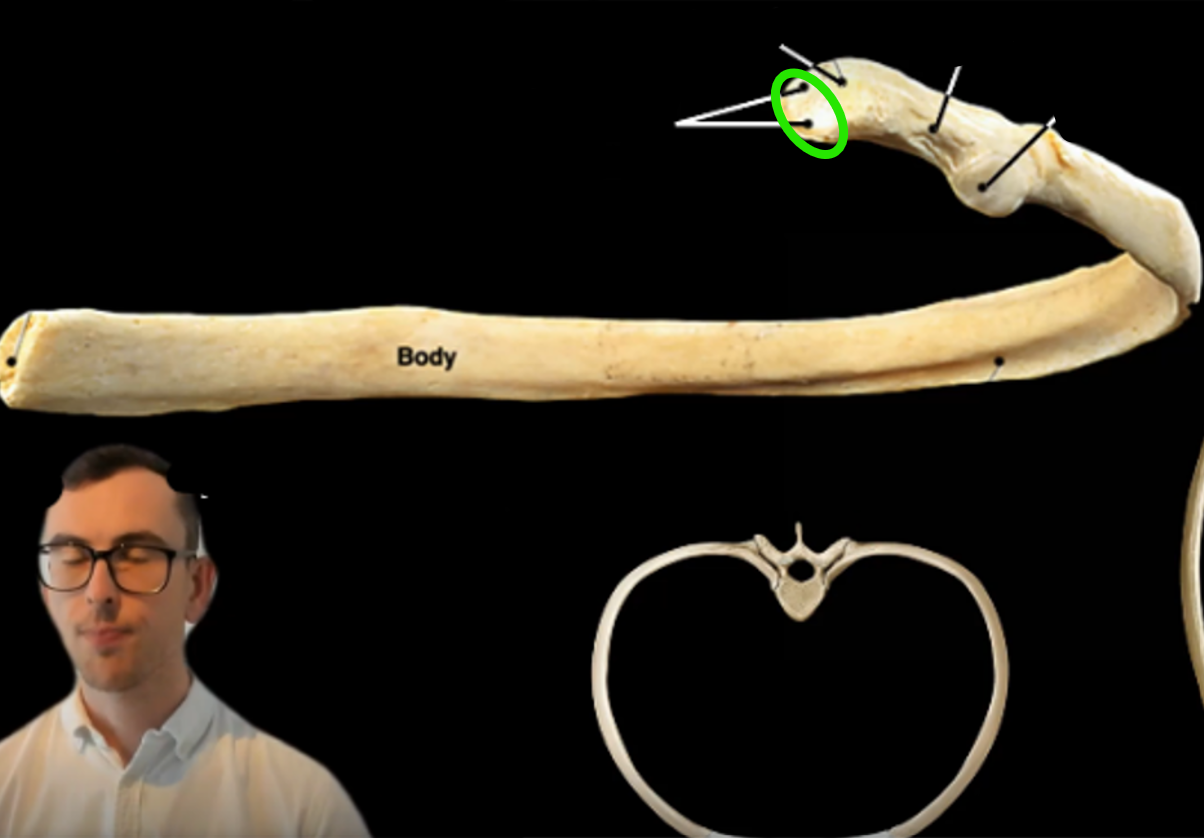
What is this?
Articular facets

What is this?
Head of rib
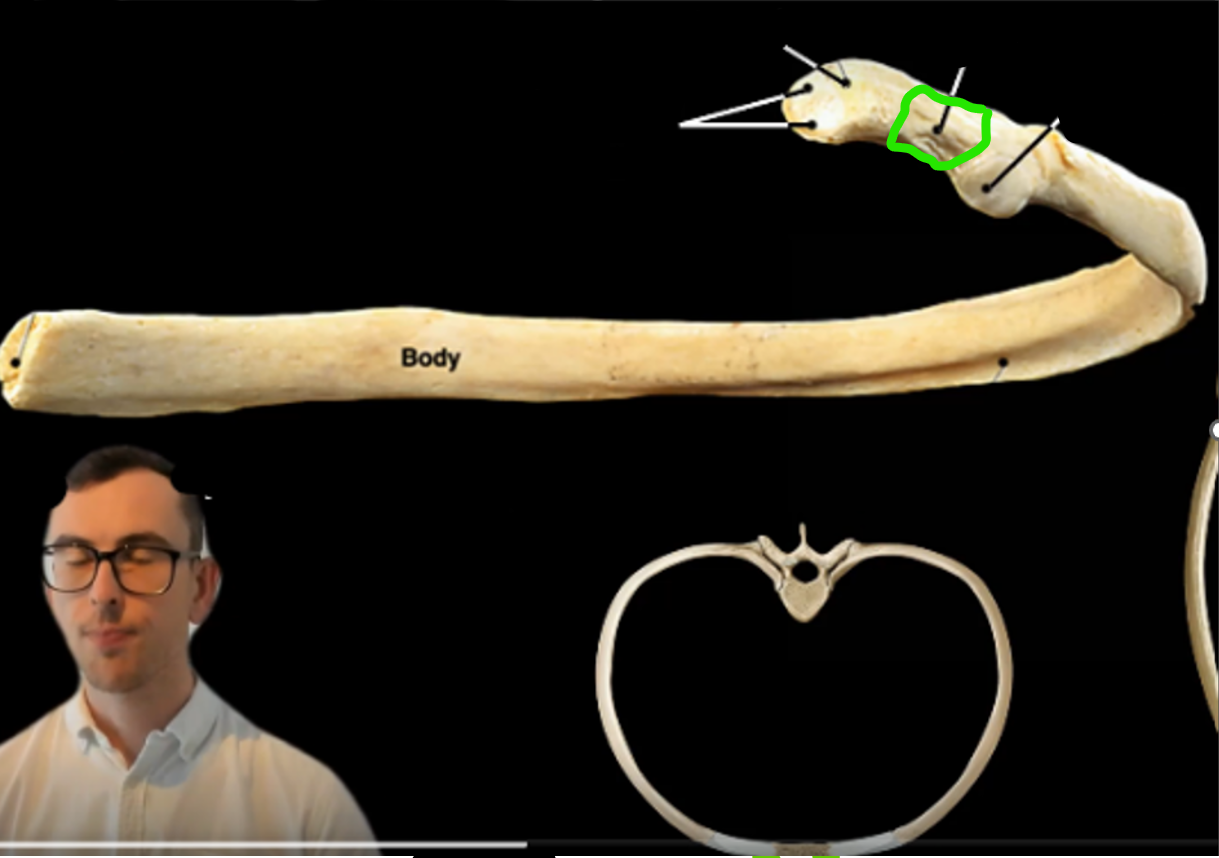
What is this?
Neck of the rib
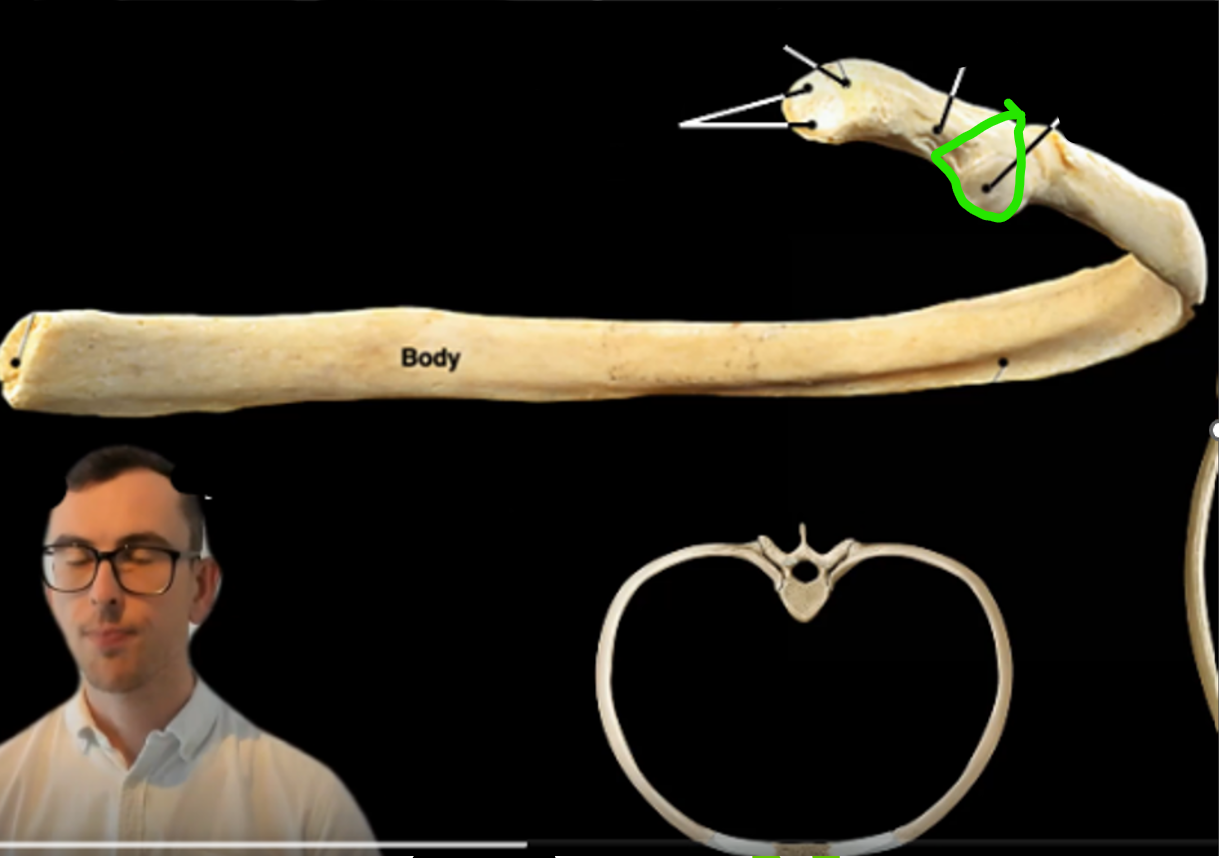
What is this?
Tubercule of rib
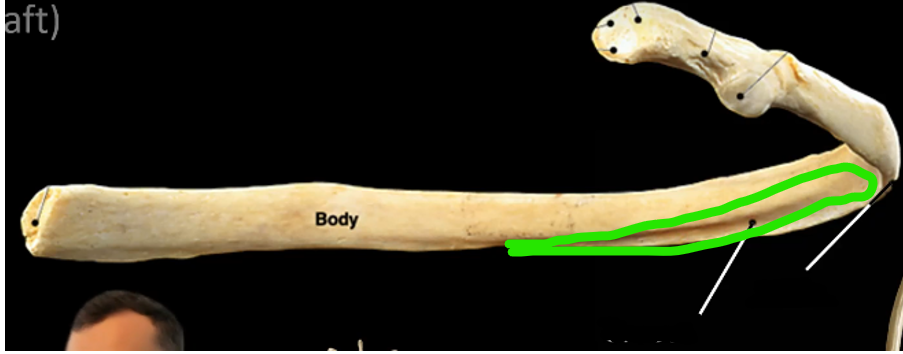
What is this?
Costal groove
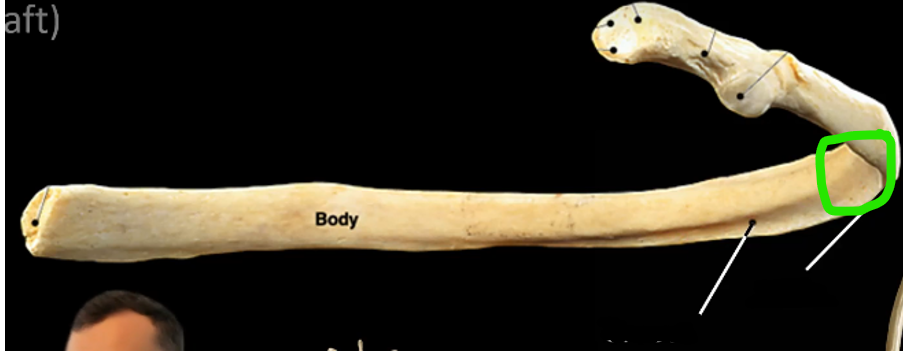
What is this?
Sternal angle
Which ribs are atypical?
1,2,10,11,12 (any number with 1 or 2)
How do the articular facets attach on to vertebrae?
One articular facet joins the top vertebrae’s bottom demifacet
The other articular facet joins the bottom vertebrae’s top demifacet
Why is T9 atypical?
T9 doesn’t have an inferior demifacet, hence it doesn’t have 2 ribs attaching onto it, only 1.
Which thoracic vertebrae are atypical?
T1, T9-12
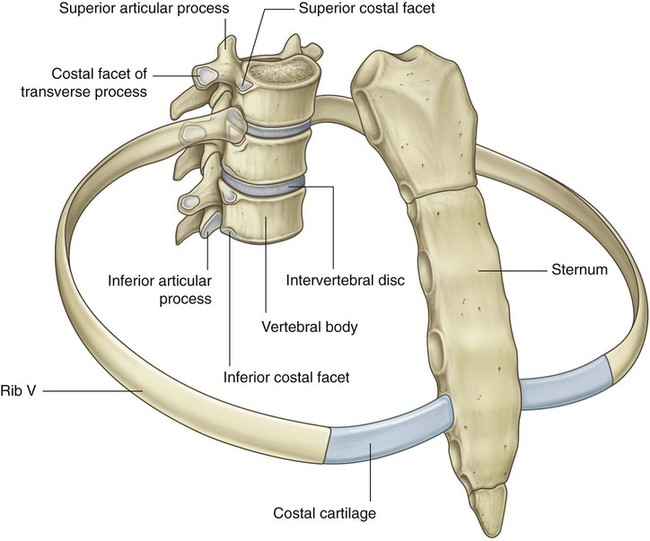
Where is the costovertebral joint?
The joint connecting ribs and vertebrae?
What bones make up the pelvis?
Ileum, Ischium, Pubis
At what point do all the pelvic bones meet at?
Acetabulum
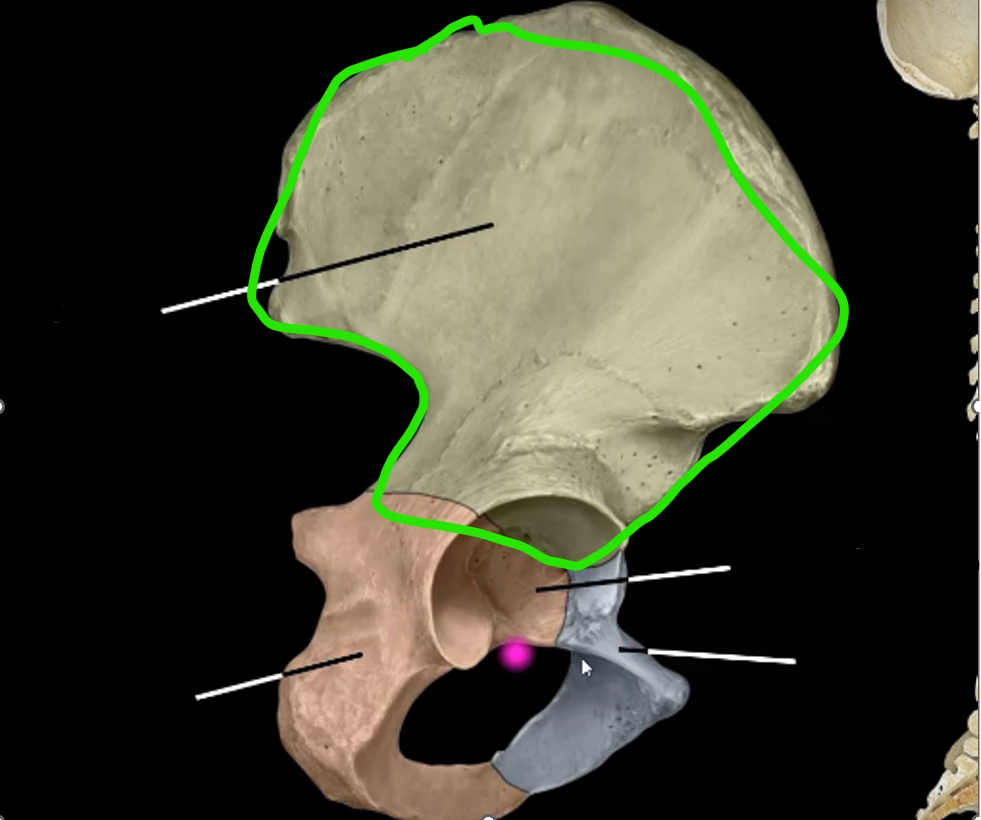
What is this?
Ileum
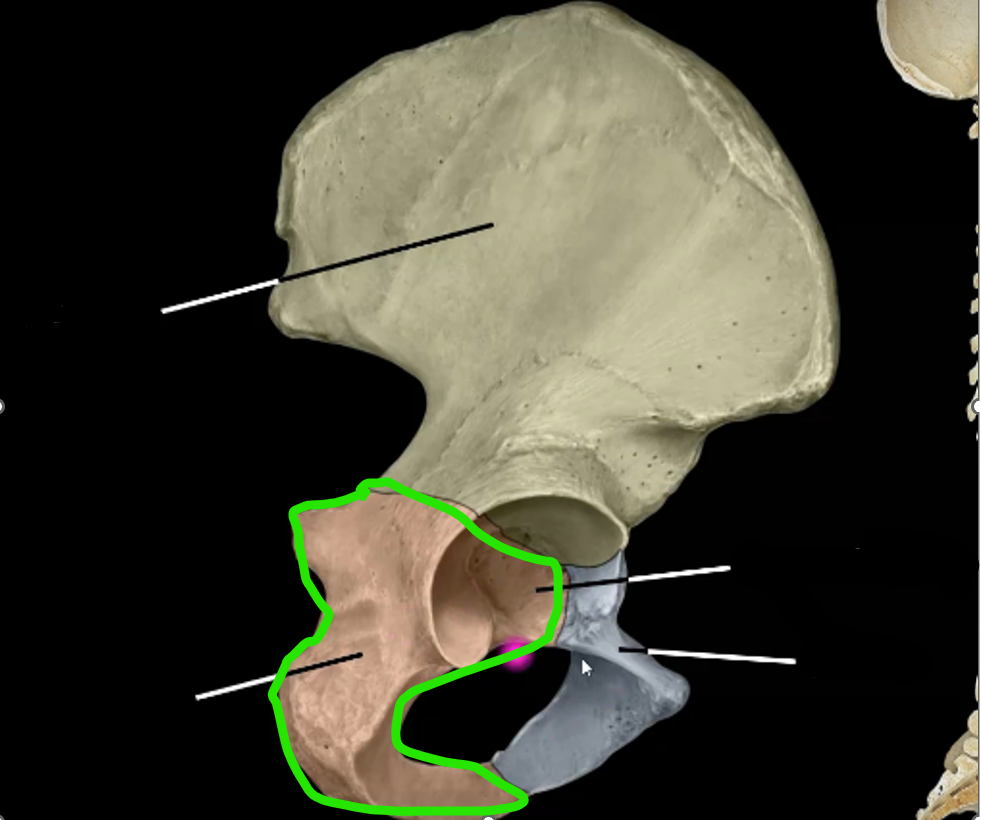
What is this?
Ischium
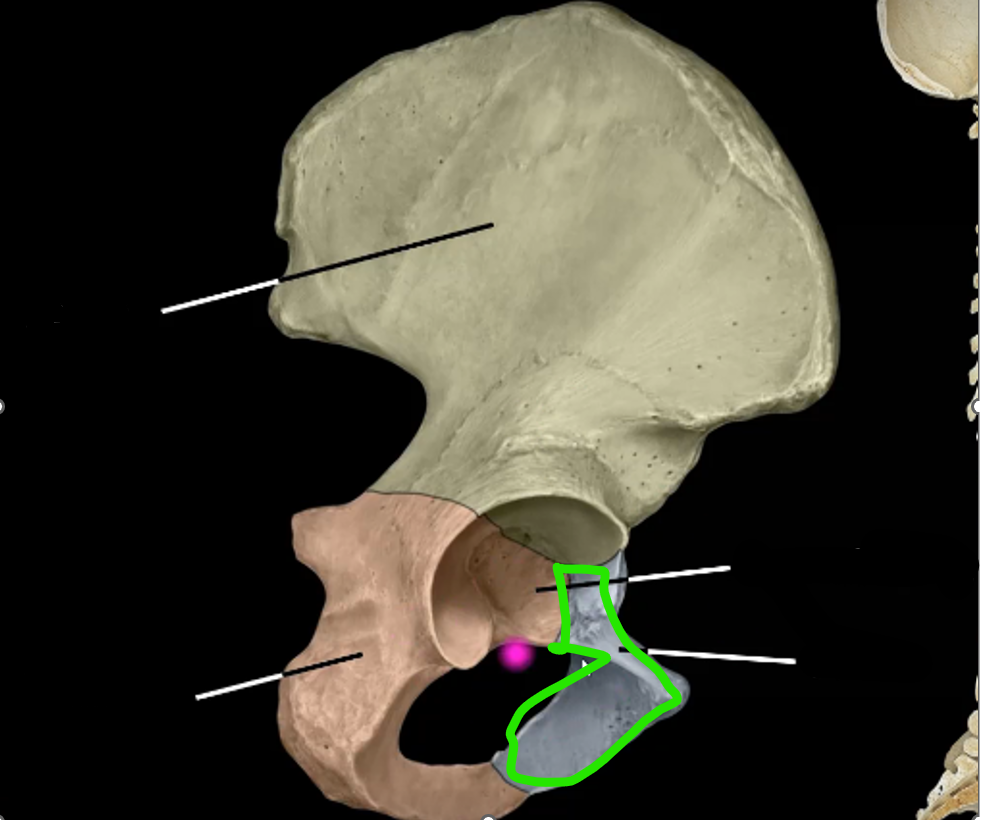
What is this?
Pubis
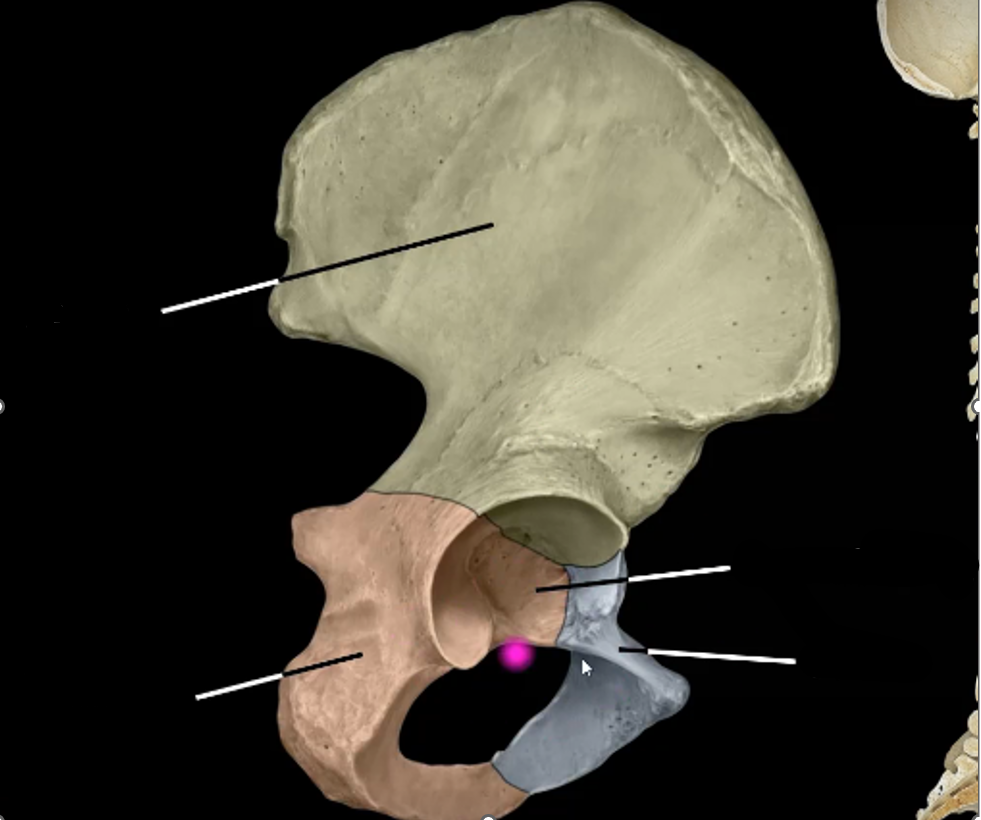
What is this?
Acetabulum
Where is the iliac crest?
At topmost part of ileum
Where is the ischial tuberosity?
At bottom of ischium
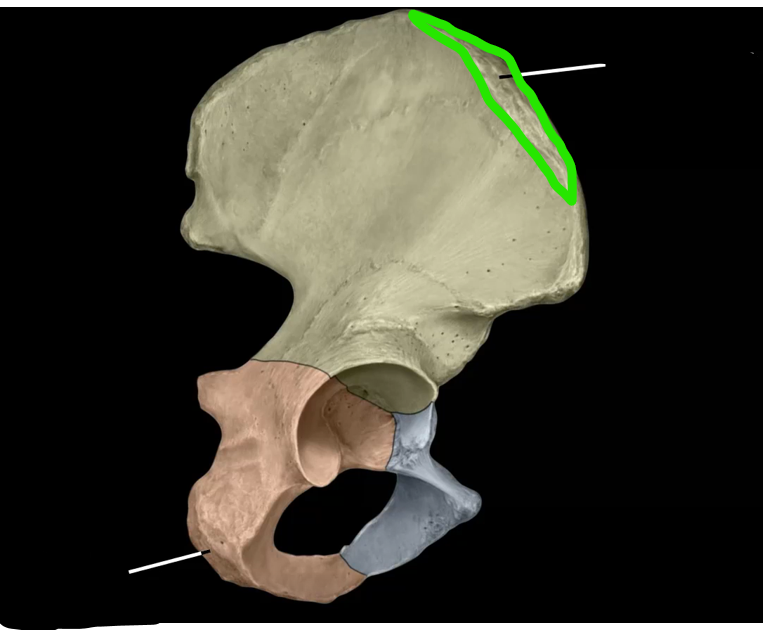
What is this?
Iliac crest
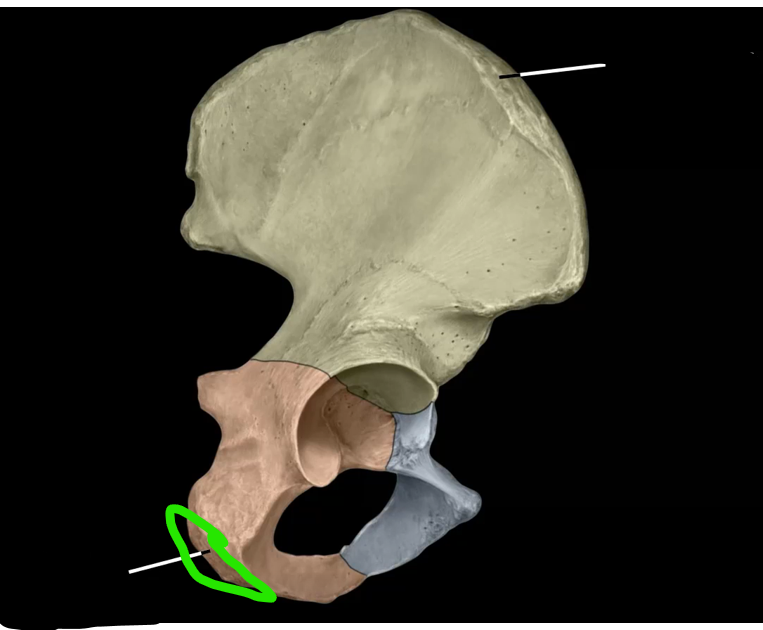
What is this?
Ischial Tuberosity
What is and where is pubic symphysis?
At bottom of pelvic bone, is a fibrocartilaginous joint
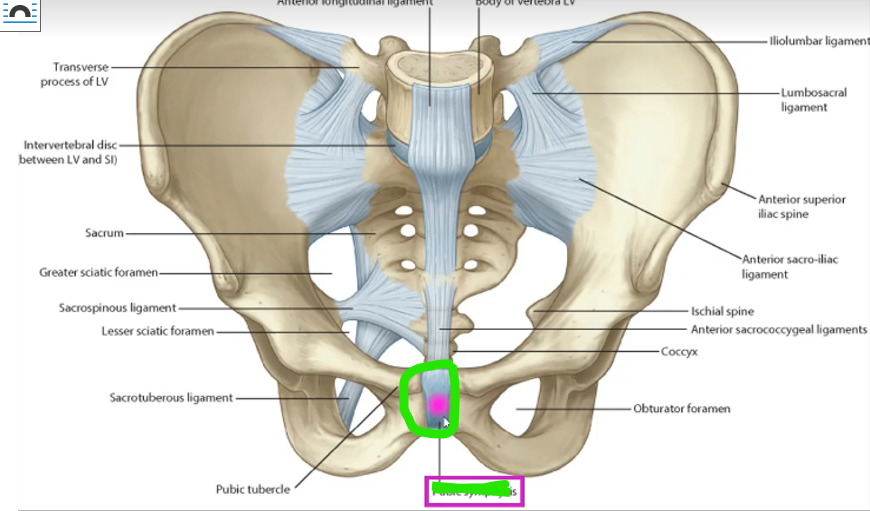
What is this?
Pubic Symphysis
What is the thoracolumbar fascia?
Connective tissue where extrinsic back muscles attach